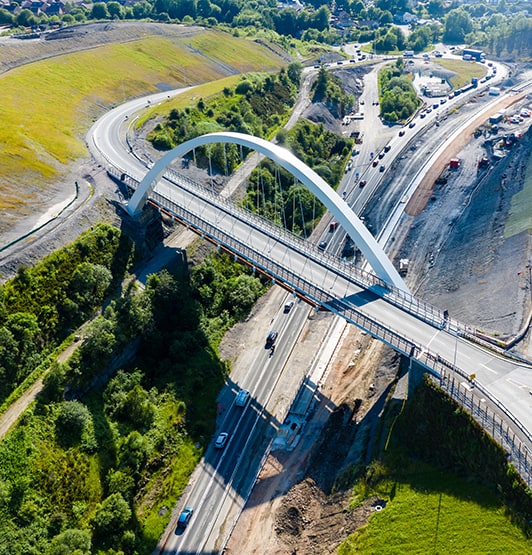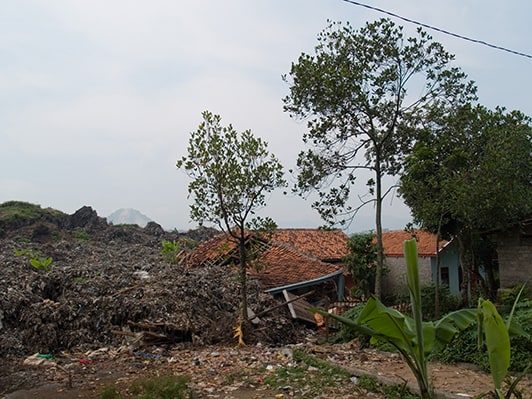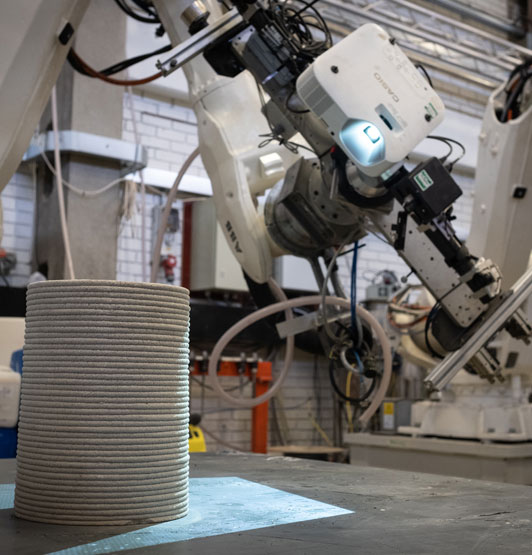Resilient infrastructure
Our research develops improved methods for modelling, analysing, monitoring and managing the infrastructure of built environments across the world.
Our research seeks new approaches to address the challenges of planning, designing, delivering, maintaining and operating enduring built-assets in the face of climate change and human-induced threat. It sustains our 50-year pedigree of improving the lives of diverse, marginalised communities around the world, and addresses many of the UN’s SDGs.
In the UK, as the construction sector recovers from the Covid-19 pandemic, our research is crucially aligned to the demand to optimise innovation and skills to build faster, more effectively and productively as set out in the government’s National Infrastructure and Construction Procurement Pipeline.
3D concrete printing
Developing and supporting new digital modern methods for construction manufacturing is increasingly important to address productivity, cost and quality issues against the imperatives of the NetZero challenge.
Deterioration of geotechnical infrastructure
We study performance of critical lifelines, such as transport links and pipe lines, which are constructed in and on the ground, to understand and detect deterioration processes impacting on safety and the prosperity of nations.

Climate impacts
Working with UK partners we research the impacts of climate change on infrastructure such as embankments and cuttings that are critical to the safe operation of railways and roads. Outputs are influencing the design and the operation of linear assets, such as HS2. This work includes a collaboration between six universities and the British Geological Survey to undertake world-leading science and create a long-term legacy focused on the geotechnical aspects of these assets.
Listening to infrastructure
We are developing novel acoustic emission (AE) monitoring approaches for a wide range of geotechnical assets, such as buried pipelines, foundations, retaining structures, tunnels and dams. We aim to revolutionise infrastructure stewardship with AE sensing to provide information on the condition of infrastructure and early warning of deterioration in real-time.

Real-time landslide monitoring
World-leading research on acoustic emissions (AE) generated by soil movement is being deployed in novel sensor systems that can detect landslides earlier than inclinometers, the standard approach. The patented, award-winning technology offers life-saving, real-time monitoring of unstable hillsides saving lives and protecting infrastructure worldwide.
Resilience of structural and geotechnical systems
We address a range of industry challenges, including modelling and design practice for structural systems under extreme loading (e.g. seismic and wind), asset condition evaluation for corrosion damage and performance of rail track.

Earthquake-resistant metal ceilings
A three-year partnership with SAS International to design and manufacture novel earthquake-resistant metal ceilings, using a combination of cutting-edge experimental and computational methods to test their seismic performance, has resulted in a unique ceiling bracing system to enhance the safety of built environments in seismic regions.
Disaster risk management and security
Our research has contributed to new methodologies that support the planning, design and engineering of urban spaces to make them less vulnerable to security threats.
We have developed a range of databases, tools and approaches that can be used, alone or in combination, by urban space stakeholders to create new, safer spaces or to reinforce existing urban infrastructure to make them more secure for people and for the surrounding environment. The range of threats and hazards covered include terror, industrial accidents, crowd control issues such as stampede threat, and natural hazards like earthquakes, flood, landslide and volcanoes.
National Facility for Advanced Infrastructure Construction
The University hosts the National Facility for Infrastructure Construction (N-FIC), which is part of the UK Collaboratorium for Research on Infrastructure and Cities (UKCRIC). This £1.3M cutting edge research facility includes a full-scale, automated flexible mould controlled by 100 actuators, and new robotic cells for 3D printing and spraying.
Meet the experts
The experts below represent the broad interests of our researchers in resilient infrastructure. We look forward to hearing from you.






